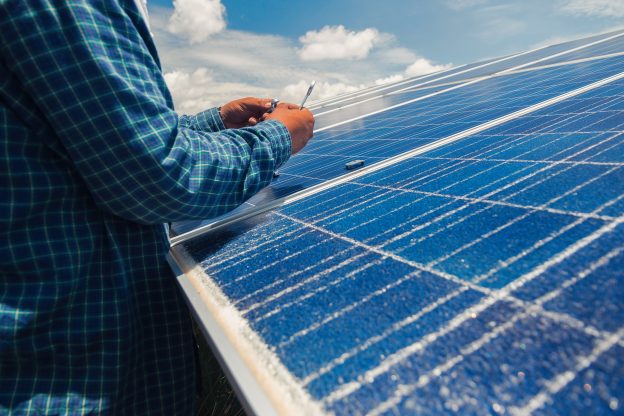Lunar New Year Holidays are coming and spot prices across the entire PV supply chain have maintained stably. However, most of PV manufacturers predict that both si wafer and PV cell will increase their prices after the Lunar New Year. Thus, some module makers began to procure small quantities since early January. The gradually rising demand triggered price to rise ahead of time. Spot prices of si wafer and PV cell both moved up during this week.
The PV industry generally assumes that polysilicon price will turn weak because capacity will reach full utilization rates starting from March. Nonetheless, mono-si ingot capacity still hit 100% utilization. That was why in China polysilicon will stay under-supply until February. Spot prices grew to RMB 140~143 / kg.
Si wafer orders usually get finalized one or two months in advance. Therefore, as of in the first ten days of February, polysilicon price is predicted to remain stable while rising a little bit. Non-China region's polysilicon higher pricing orders will stay at US$ 14~15.5 / kg.
Multi-si wafer prices of China and Taiwan increased in sync. In China, quote prices ranged from RMB 5.05 / pc to RMB 5.15 / pc. In Taiwan, quote prices showed a mix of signals, while super-high-efficiency multi-si wafer price hit US$ 0.66~0.69 / pc.
Because some multi-si wafer foundries will not fully operate during Chinese New Year Holidays. Ultra-high-efficiency multi-si wafer might keep on accumulating price rising momentum because it experiences a slight undersupply. Its price might fully reached US$ 0.68 /pc after the Lunar New Year Holidays.
The supply shortage issue of mono-si wafer hasn't showed any signs of relief in first quarter of 2017. If multi-si wafer price starts to rise, the price gap between multi-si wafer and mono-si wafer will narrow. Then, even though mono-si wafer is in shortage, in the short run, mono-si wafer's price will remain stable
If mono-si wafer price rises along with multi-si wafer price, then standard mono-si PV cell cost will continue to increase. That means, only PERC will offer better cost/performance ratio among the mono-si wafer products. In such scenario, if standard multi-si PV cell’s profit is higher than standard mono-si PV cell profit, then mono-si PV cell makers cannot fulfill their goal of continual market share growth by only relying on PERC products. The current market's lop-sided preference on mono-si PV cell might change its direction.
Mono-si and multi-si PV cell prices both rose this week. Multi-si PV cell (18.4% conversion efficiency) price rose to US$ 0.215~0.22 / W, while standard mono-si PV cell price climbed to US$ 0.245 / W. In China, quotes also kept on increasing. Multi-si PV cell price reached RMB 1.8 / W, and mono-si PV cell price ranged from RMB 1.95 / W to RMB 1.98 / W.
In early January 2017, price hit rock bottom and rebounded, so some module makers set off to increase procurement momentum to PV cells. Thus, price rise took place faster than expected. After the Lunar New Year, PV cell price will continuously rise along with China’s installation rush.
Although the mid-stream product prices began to grow, module prices hardly move up due to overwhelming capacity. Merely China's demand is strong. The rest regions' module prices remain weak.
(Analysis provided by Corrine Lin, analyst at EnergyTrend. Translated by Janet Chen, translator of TrendForce Corp.)







